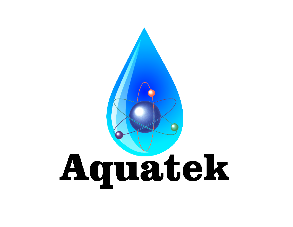Glossary of water terminology and definitions-b
Backflow
Flow of water in a pipe or line in a direction opposite to the normal flow; often associated with back siphonage or the flow of possibly contaminated water into a potable water system.
Backflow Preventor
A device or system installed in a water line to stop backflow from a non-potable source.
Back Pressure
Pressure which creates resistance against the flow of water.
Backwash
The upflow or counter-current flow of water through a filter or ion-exchange medium, lifting the mineral bed and flushing away to the drain the particles of foreign matter that have been filtered from the water supply during the service cycle.
Bacteria
Unicellular microorganisms which typically reproduce by cell division. Although usually classed as plants, bacteria contain no chlorophyll. Many different types of bacterial organisms are often found in drinking water. Most municipally treated water is essentially bacteria free due to the addition of chlorine. Some forms of cyst type viruses have a degree of immunity to chlorine due to the cocoon-like shell around the virus. These types of organisms such as Giardia Cyst, Giardia Lamblia, and Cryptosporidium have a physical size of three to seven microns and can be effectively removed by sub-micron filtration. Some bacteria are helpful to man, others harmful.
Bacteriastatic
Having the ability to inhibit the growth of bacteria without destroying them. For example, silver impregnated activated carbon will limit bacterial colonization but not eliminate it.
Bactericide
Any substance or agent which kills bacteria.
Bar
A unit of pressure. One bar equals 14.5 pounds per square inch (psi) or about 0.987 standard atmospheres.
Base
An alkali that releases hydroxyl ions when dissolved in water. Bases reset with acids to form a neutral salt and water. In general they taste bitter rather than sour, and feel slippery and reverse the color changes produced by acids in indicators. For example, they turn litmus paper blue.
Batch Operation
The utilization of ion exchange resins to treat a solution in a container wherein the removal of ions is accomplished by agitation of the solution and subsequent decanting of the treated liquid.
Bed
A mass of ion exchange resin particles or filter media contained in a column.
Bed Depth
The height of the resin or filter media in the column after it has been properly conditioned for effective operation, usually expressed in inches. This depth excludes any supporting bed.
Bed Expansion
The effect produced during backwashing: the resin particles become separated and rise in the column. The expansion of the bed due to the increase of the space between resin particles may be controlled by regulating backwash flow.
Bicarbonate Alkalinity
The presence in a solution of hydroxyl (OH-) ions resulting from the hydrolysis of carbonates or bicarbonates. When these salts react with water, a strong base and a weak acid are procured, and the solution is alkaline.
Biocide
A chemical which can kill or inhibit the growth of lining organisms such as bacteria, fungi, molds, and slime. Biocides can be harmful to humans.
Biodegradable
Subject to degradation into similar substances by biological action . Examples include detergents, sewage, and other organic matter by bacteria.
Birm
The trade name for a manganese dioxide coated aluminum silicate used as an oxidizing catalyst filter medium for iron and manganese reduction.
Blowdown
The withdrawal of water containing a high concentration of solids or dissolved solids or maintain a specified solids-to-water concentration ratio.
BOD
Abbreviation for Biochemical Oxygen Demand. The amount of oxygen consumed in the oxidation of organic matter by biological action under specific standard test conditions. Widely uses as a measure of the strength of sewage and wastewater.
Bone Char
A black pigment substance with a carbon content of about 10 percent, made by carbonizing animal bones. It is used as a selective anion exchanger for fluoride and arsenic reduction.
Brackish Water
Water containing bacteria between 1.000 and 15,000 ppm of dissolved solids.
Breakthrough
The first appearance in the solution flowing from an ion exchange unit of unabsorbed ions similar to those which are depleting the activity of the resin bed. Breakthrough is an indication that regeneration of the resin is necessary.
Brine
A strong solution of salt(s), such as the sodium chloride or potassium brine used in the regeneration of ion exchange water softeners, but also applied to the mixed sodium, calcium and magnesium chloride waste solution from regeneration.
Brine Ejector (Eductor)
A device used to draw a solution such as brine from a storage tank and force it into a cation or anion water treatment unit.
Brine Tank
A tank which sits beside the softening unit and acts as a salt storage and brine supply.
Buffer
A chemical which causes a solution to resist changes in pH, or to shift the pH to a specific value.
Bypass
A connection or a valve system that allows untreated water to flow to a water system while a softener or filter is being regenerated, backwashed or serviced; also applied to a special water line installed to provide untreated water to a particular tap, such as a sill cock.
